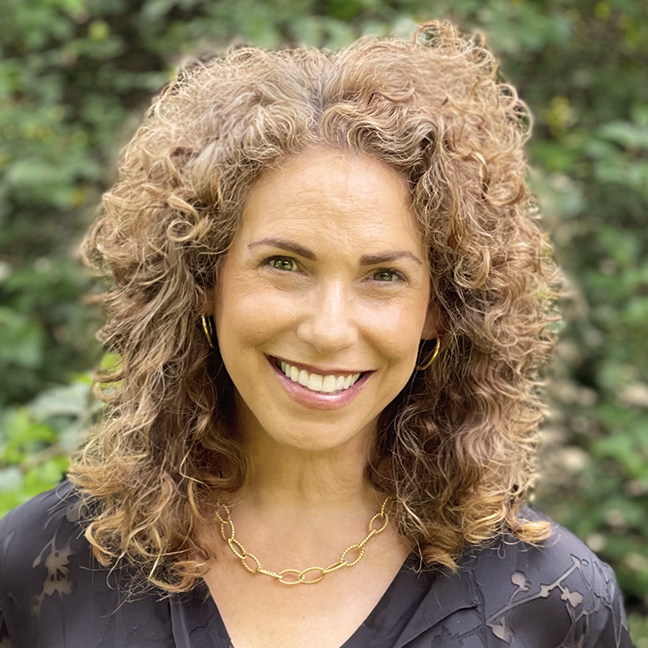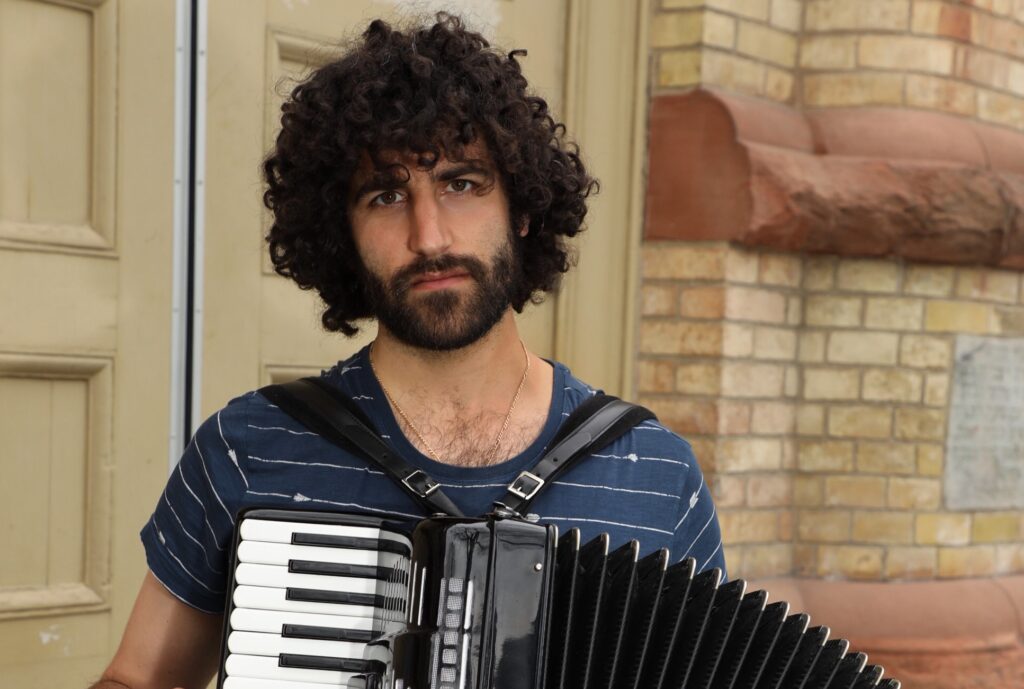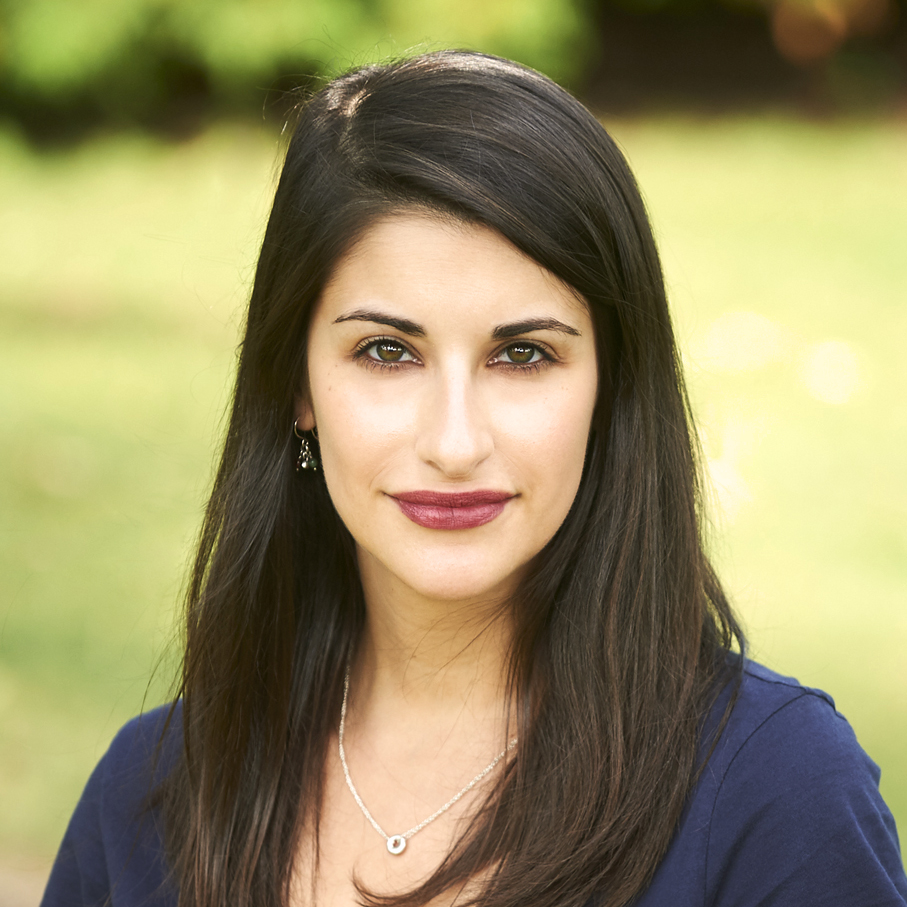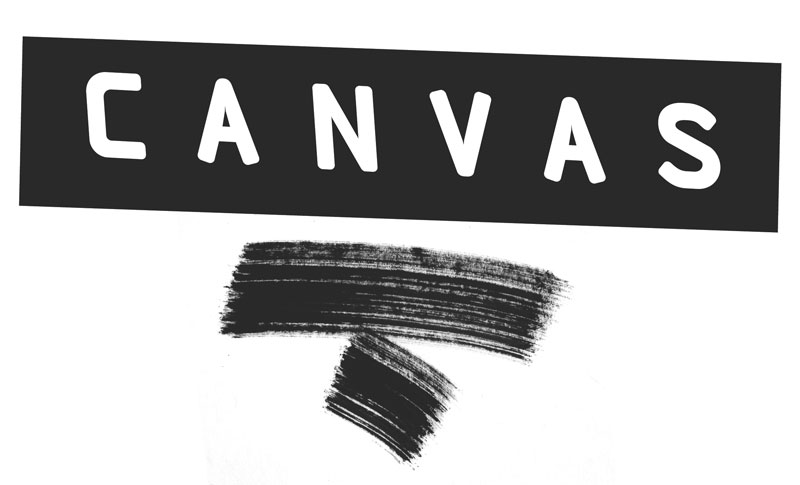In honour of International Holocaust Remembrance Day 2022, the Neuberger explored the intersection of Holocaust memory and digital culture in museums, academia, and video games with experts and industry professionals. Photographer Marnie Salsky was among the panel of experts and discussed the Stolpersteine project. We caught up with her to learn more about the project, her interest in digital storytelling, creating art during the Covid-19 pandemic and who’s inspiring her in Toronto lately.
Kultura Collective: Hi Marnie. Can you tell us a bit about you and your practice?
Marnie Salsky: I am a visual artist based in Toronto, working primarily in photography and multimedia installation with an interest in storytelling centered around community. My art and site-specific commissions have been exhibited in galleries and can be found in private and corporate collections. This past Fall I received an MFA in Documentary Media Studies from Ryerson University. My most recent video and photographic series focusses upon the ways in which shared collective memory gives rise to group identity, through the consideration of the complex lived experiences of the Toronto Jewish community amid the recent rise of antisemitism at home and abroad.
KC: What is the Stolpersteine “Stumbling Stones” memorial project? How did you get involved with it?
Marnie: The website Stolpersteine – Stories through Generations was developed as a parallel project to the Stolpersteine, a memorial project created by German artist Gunter Demnig. The Stolpersteine have been described as the most compelling, personal, moving memorial one could imagine as it names the individual and cites their date of birth, date of deportation, date of death or destiny. They are small brass covered cobblestones (10x10cm) located on the street at the entrances of buildings that were the last freely chosen home of the individual named on the Stolpersteine, the observer is literally on the threshold of the lives these people led until they were torn out. It is the world’s largest decentralized monument, over 80,000 stones have been installed in 2,000 cities and 26 countries.

In late winter 2020, the German Consulate in Toronto brought the physical exhibition Stolpersteine/Stumbling Stone to Canada for the first time to coincide with Liberation75. With COVID-19 restrictions in place, unfortunately the exhibition was not accessible to the public during its stay in Toronto, and only briefly open during its short visit to the Jewish Heritage Centre of Western Canada that Fall. In December 2020 it returned to Germany, sadly never opened to the Canadian public.
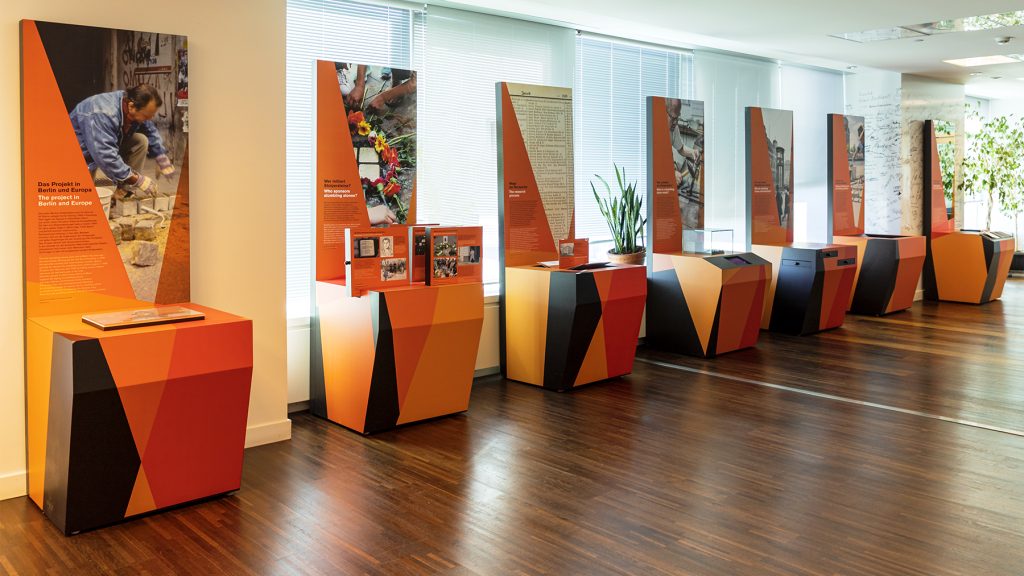
The German Consulate, in partnership with the Neuberger Holocaust Education Centre, decided to use this opportunity to turn “lemons into lemonade”. They partnered with the Immersive Technology department of Ryerson’s Library to create a web-based project. At the time I was completing my Master of Fine Arts in Documentary Media and due to the subject matter of my multimedia installation documentary project, A PEOPLEHOOD | AMIUT YEHUDIT, the Consulate and myself were put in touch with each other. We began discussions of how to create an online project emanating from the Stolpersteine physical exhibition using the Stolpersteine stones as a touchpoint for developing personal stories – for both the individual named on the stone and their descendants living in the Toronto area.
KC: Can you tell us about the digital element to the project? (click here to visit the website)
Marnie: The website Stolpersteine: Stories through Generations takes its impetus from the line “every stone has its story”. The Stolpersteine as a decentralized monument is deeply personal and so is the website. Our aim was to create an intimate, immersive experience. The website is an interactive user driven site, as opposed to a unidirectional fixed narrative, allowing the user to decide what they want to explore and in which order.
This project aims to bring to life the stories and memories of both the individuals named on a Stolpersteine as well as the person sharing their story. It weaves together the past and the present. The individual stories and family journeys of those featured on the site are unique. The Stolpersteine is the common element, as opposed to time or place, and it was used as the artistic framework for storytelling. The website organizes the oral histories into broad categories of discussing the history of one’s family before and after the Holocaust, sharing what the Stolpersteine has meant to them as well as providing an opportunity to share insights about today’s landscape of rising extremism and antisemitism.
The project’s goal is to preserve the memory and the deeply moving stories and insights for future generations, as well as to act as an access point for further education and discussion. Intimacy is the key to this site – its purpose is not to provide a history lesson or broader Holocaust education. There are many wonderful websites and tools that do that already. Rather this site is designed to use digital technology to tell stories in a very digestible manner with a website that is engaging and intuitive to navigate. The user can select to hear testimony based on a category or choose to follow one individual’s story across the categories. Information is presented in multiple ways, from short snippets of audio to full text transcripts of the extended interviews. Again, the user can determine which manner they want to engage with the information. At present there are four individual’s stories on the site and the goal is to grow and add additional narratives.
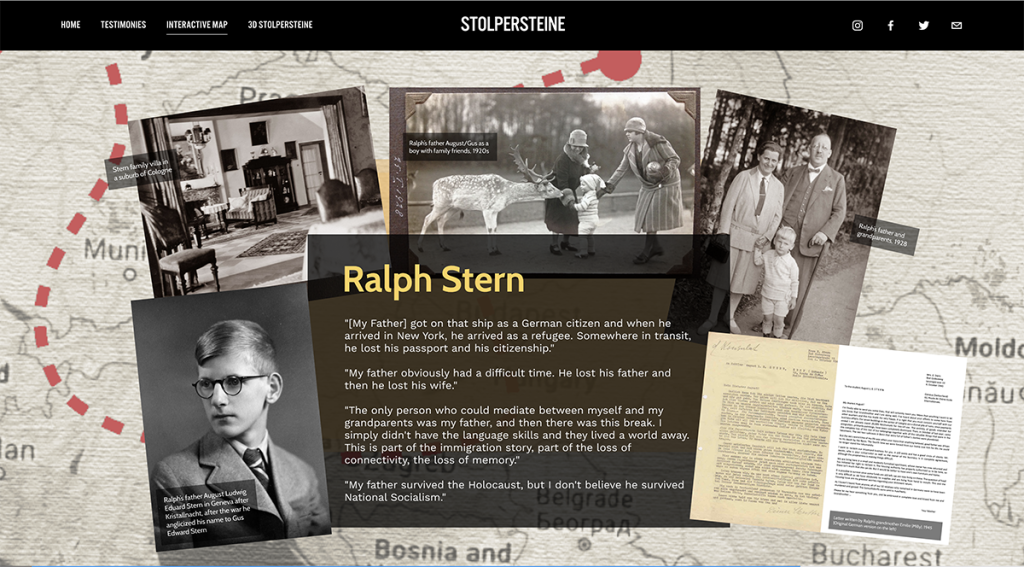
KC: For International Holocaust Remembrance Day 2022, the Neuberger Holocaust Education Centre held a panel discussion on the intersection of Holocaust memory and digital culture in museums, academia, and video games with experts and industry professionals, including yourself. How important is the role of digital storytelling in contemporary Holocaust education and study? (click here to watch the recording of of the program on the Virtual J)
Marnie: The role is vitally important in contemporary Holocaust education and study. Today’s society is truly one that garners knowledge from their time spent online. Gen Z is a cohort of digital natives – they do not know a world without the internet and it’s important to provide information in a manner that resonates with them. The oral histories shared on the website provide glimpses that cannot be obtained from documents or written records alone. They supplement our cultural and historical archives with intimate personal memories reclaiming a lost world through the power of stories. There is a simplicity to the Stolpersteine stones themselves that immediately connects with humans. The potential use of our website is to provide an access point for those not well educated about the Holocaust and its impact, allowing the user to make a connection on a human level through the technical interface. It creates a virtual education space to reach today’s learners and can easily be used in conjunction with other more traditional tools.
KC: In August 2021, you exhibited the project A PEOPLEHOOD | AMIUT YEHUDITat the Artspace Gallery in 401 Richmond. Can you tell us about that project?
Marnie: A PEOPLEHOOD | AMIUT YEHUDIT is a multimedia installation examining Toronto’s contemporary Jewish community and the emotional impact of today’s insidious antisemitism. Weaving together personal interviews, photography and media ephemera, this project aims to articulate the complexity of Jewish identity, and reveal the concerns and fear resulting from pervasive aggressions against the community.
As we know, over the past five years Jews have been the most targeted victim group of hate crimes in Toronto despite making up only 4% of the city’s population, mirroring a global trend. The exhibition is a response to this disturbing situation. It revolves around a 22-minute, two-channel video, supported by a constellation of related objects, which all speak to themes of identity and diversity, community and belonging, and prejudice and hatred. Taking the form of a non-linear narrative, the video features an interwoven series of interviews with individuals from the Jewish community as they reflect upon aspects of identity, pride, and trepidation. Alongside this, images of archival and present-day photographs, newspaper articles, social media and various ephemera situate expressions of antisemitism and contextualize the lived experience of those photographed and interviewed.
KC: You interviewed many people to compile the audio for A PEOPLEHOOD | AMIUT YEHUDIT– is there one quote that stands out to you?
Marnie: In total 13 interviews were completed. Some of those interviewed were close family members, others were acquaintances, but the majority were complete strangers to me. Participants were purposefully selected from a cross-section of three primary age groups (20–30s, 50–60s, 80+) to explore intergenerational perspectives. As well, there was representation from various other community demographics (socioeconomic, culture, religious observance, political). I intentionally decided not to photograph or video my interview participants so they would remain anonymous. My hope was that knowing they would not be identified would encourage those interviewed to speak more freely and candidly.
The interviews were examined for common themes as well as representation that went against the impulse to view the Toronto Jewish community as uniform. What surprised me most was the willingness and candidness of all the participants to share intimate and deeply personal reflections upon their experiences. Powerful themes and subtexts (belonging, disquietude) emerged when the interview content was analyzed. I was surprised how many participants brought up the subject of race and the complexities of being viewed as “white passing” when they do not view themselves as “white.” What did not surprise me was a shared commonality amongst many of the participants, regardless of age or level of religious observance, of experiencing hesitancy in disclosing their Jewishness in certain spaces and social situations in Toronto.


KC: These projects were created during the Covid-19 pandemic. What were the unique challenges and opportunities working during this moment in time?
Marnie: Producing creative works during Covid was definitely challenging! As the artistic lead for the Stolpersteine project I had envisioned conducting the interviews in-person and creating images of the participants in their milieu and places of importance to them in Toronto. However, with increasingly restrictive lockdowns and stay-at-home orders this simply wasn’t possible. With a firm deadline of launching the website to coincide with the rescheduled event of Liberation75, using today’s vernacular we pivoted as needed: interviews were conducted over Zoom and the family archives of the participants were used even more so to bring to life the stories and memories of both those named on the Stolpersteine as well as the person sharing their story.
With my project A PEOPLEHOOD | AMIUT YEHUDIT I had completed about half of my planned shot list and was forced to abandon the rest due to Covid restrictions. The form of my documentary was still “a work in progress”, so I switched directions and decided to incorporate audio. In Summer 2020 I was able to conduct the interviews outdoors and easily maintain social distancing. Creatively Covid turned out to be a blessing in disguise – I began to think of the interviews as the “mainframe” of the project and worked on structuring visual themes around the voices and narratives of individual’s personal experiences. My goal was to use the audio to illustrate a story larger than any one individual, one that is fueled by multiple individual stories when amassed together. I ultimately settled on a multimedia approach to blend my project’s discursive threads artistically. This allowed me to articulate the complexity of contemporary Jewish identity, examine notions of security and demonstrate the emotional impact of the reality of today’s antisemitism in a community that celebrates its identity in many forms.
KC: What else are you working on right now?
Marnie: I am revisiting previous forms I experimented with in earlier iterations of my project and contemplating creating a book form of A PEOPLEHOOD | AMIUT YEHUDIT.
KC: Who/what is inspiring you in Toronto right now? What other Jewish creatives should we know about?
Marnie:
- Ruth Kaplan www.ruthkaplanphoto.com
- Tobi Asmoucha www.tobiphoto.com
- Alysa-Beth Engel www.alysaengel.art
KC: Lightning round questions!
- Pickled herring vs gefilte fish? Gefilte fish
- Fiddler on the Roof vs Joseph? Fiddler!
- Larry David vs Jerry Seinfeld? Seinfeld
- New York vs Montreal bagels? Montreal
Marnie Salsky is a Toronto-based, award-winning photographer with an interest in storytelling centered around community. Her fine art photography and site-specific commissions have been exhibited in galleries and can be found in private and corporate collections. Marnie received her MFA in Documentary Media Studies from Ryerson University. Her recent work focuses on the ways in which shared collective memory gives rise to group identity. As a Jewish Torontonian and second-generation Canadian, her latest video and photographic series considers the complex lived experiences of the Toronto Jewish community amid the recent rise of antisemitism at home and abroad.
Through its museum and programs, the Sarah and Chaim Neuberger Holocaust Education Centre generates knowledge and understanding about the Holocaust and serves as a forum for dialogue about civil society for present and future generations. The Sarah and Chaim Neuberger Holocaust Education Centre was officially opened on September 22, 1985 as the Holocaust Centre of Toronto and grew out of the commemorative activities of the Holocaust Remembrance Committee of the Toronto Jewish Congress, a forerunner to the present UJA Federation of Greater Toronto (UJA Federation).
The Neuberger reaches 20,000 students annually through school visits to the museum and education programs, and an additional 30,000 members of the general community through its signature program, Holocaust Education Week. Cited by scholars as one of the most comprehensive vehicles for Holocaust education and remembrance in the world, it has been recognized as a “Best Practice” in the field by the International Holocaust Remembrance Alliance (IHRA). Year-round programming – such as International Holocaust Remembrance Day, Raoul Wallenberg Day, and Yom Hashoah – demonstrates the Centre’s commitment to dynamic and meaningful programming across the GTA.

